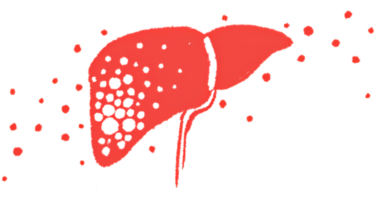Hemophilia A vs. B: Differences and similarities
While hemophilia A and hemophilia B are both bleeding disorders characterized by deficiencies in blood clotting factors, there are differences in one type versus the other, particularly in the specific genetic mutations that cause the disease, and in some of the treatment methods.
Hemophilia A is more common. It accounts for approximately 80% of all hemophilia cases. Hemophilia B is the second most prevalent type of the bleeding disorder, making up the remaining 15% to 20% of cases.
Though they have different causes, hemophilia types A and B do also share similarities, with both occurring primarily in men and boys, and having like symptoms.
What’s the difference between hemophilia A and B?
Also known as classical hemophilia, hemophilia A is the most common type, occurring in approximately 1 in 5,000 male births in the U.S.
Meanwhile, hemophilia B occurs in approximately 1 in 25,000 male births in the U.S. It also is known as Christmas disease, named after Stephen Christmas, a Canadian boy who was diagnosed in 1952 with the condition.
Each type of hemophilia is caused by mutations in different genes present on the X chromosome, which is a sex-determining chromosome in humans. Females have two X chromosomes, while males have an X and a Y chromosome.
Do hemophilia A and B have different causes?
Hemophilia A and B have different causes based on the specific genes involved and the clotting factors affected.
Mutations in the F8 gene, which results in a deficiency of blood-clotting factor VIII, cause hemophilia A.
Hemophilia B is the result of mutations in the F9 gene, which lead to a deficiency of factor IX, which is essential for blood coagulation.
Both hemophilia A and B are inherited in an X-linked recessive manner, meaning the mutated gene responsible for the disorder is located on the X chromosome.
Males with one mutated F8 or F9 gene are more likely to have hemophilia. Females with one of these genes mutated typically are carriers — meaning they can pass the mutated gene on to their children — but they may not have symptoms.
In both hemophilia A and B, approximately one-third of cases do not have a family history of the bleeding disorders and result from spontaneous genetic mutations.
How do symptoms differ between hemophilia A and B?
While the underlying genetic causes are different, the symptoms of hemophilia A versus hemophilia B often are similar.
People living with hemophilia may experience spontaneous bleeding, prolonged bleeding after injuries, and other bleeding-related complications. The absence of either factor IX or VIII interferes with normal blood clotting.
The level of activity of factor IX or VIII determines the severity of each hemophilia type. Hemophilia A and B are diagnosed as being mild, moderate, or severe.
People with mild hemophilia have factor levels between 5% and 40% of normal. Mild hemophilia may cause a person to have symptoms such as abnormal bruising and more bleeding than normal after dental procedures, trauma, or surgery. Many people with mild disease may not be diagnosed with hemophilia until they experience bleeding after having a procedure.
Individuals with moderate hemophilia have factor levels between 1% and 5% of normal. Moderate hemophilia also may cause prolonged bleeding after surgery or trauma. It’s usually diagnosed in young children.
People with the severe form of hemophilia have factor levels less than 1% of normal. Severe hemophilia causes spontaneous bleeding episodes, including internal bleeding into the joints and muscles, which typically trigger pain and mobility issues. Diagnosis is usually made during infancy or early childhood.
Do treatments differ for hemophilia A and B?
The treatments for hemophilia A and B may be similar, as both involve deficiencies in clotting factors. However, there is some difference between hemophilia A and B in the specific factor replacement therapies given to patients with each type.
The mainstay of hemophilia A treatment involves replacing the missing or deficient factor VIII.
Hemophilia B treatment involves replacing the missing or deficient factor IX.
With both types, prophylactic treatment can be given regularly to prevent bleeding episodes, during bleeding episodes, or before planned procedures such as surgery. These preventive therapies typically are administered via intravenous or into-the-vein infusions, and aim to restore blood clotting capacity.
Another therapeutic approach being explored for hemophilia is gene therapy. The goal of gene therapy for both types of hemophilia is to deliver a healthy version of the defective gene to the body’s cells.
How does life expectancy vary between hemophilia A and B?
A highly reliable therapy for hemophilia did not exist until the 1960s and 1970s, when treatment with clotting factor replacements began. Until such therapy became available, the average life expectancy of a male with severe hemophilia was 12 years.
Advances in hemophilia treatment over the last few decades have led to significant improvements. The availability of clotting factor therapies allow many people with the mild form of the disease to manage their condition, prevent major bleeds, and lead normal lives.
Life expectancy varies according to the severity of a patient’s hemophilia, with more severe cases associated with a higher risk of bleeding complications.
According to estimates from the World Federation of Hemophilia, children diagnosed with hemophilia today, and who start treatment early, have a life expectancy comparable to that of the general population. Adult men already living with hemophilia have a life expectancy about 10 years shorter than that of men without the disease.
A 2023 report suggested that life expectancy, when compared with the rest of the population in medium- to high-income countries, is 30% shorter for hemophilia A and 24% shorter for hemophilia B. Life expectancy is shorter in countries with more limited access to hemophilia treatments.
Regular monitoring, early intervention, and advancements in treatment options all can contribute to a longer life expectancy.
Hemophilia News Today is strictly a news and information website about the disease. It does not provide medical advice, diagnosis, or treatment. This content is not intended to be a substitute for professional medical advice, diagnosis, or treatment. Always seek the advice of your physician or other qualified health provider with any questions you may have regarding a medical condition. Never disregard professional medical advice or delay in seeking it because of something you have read on this website.

 Fact-checked by
Fact-checked by 

